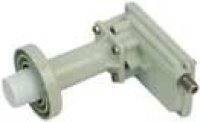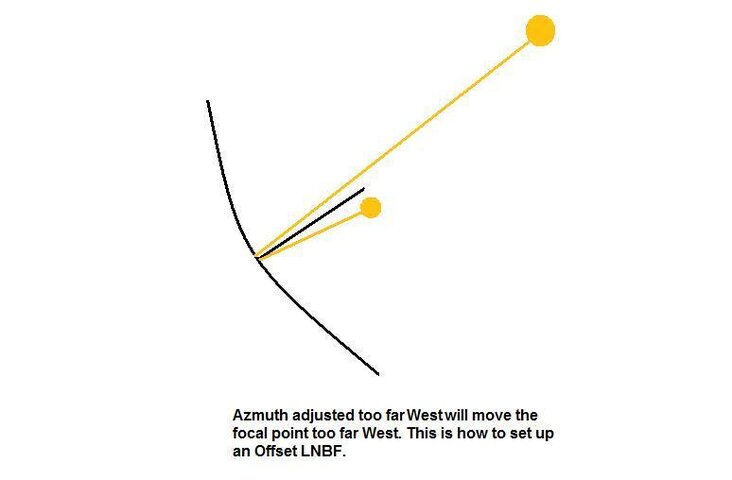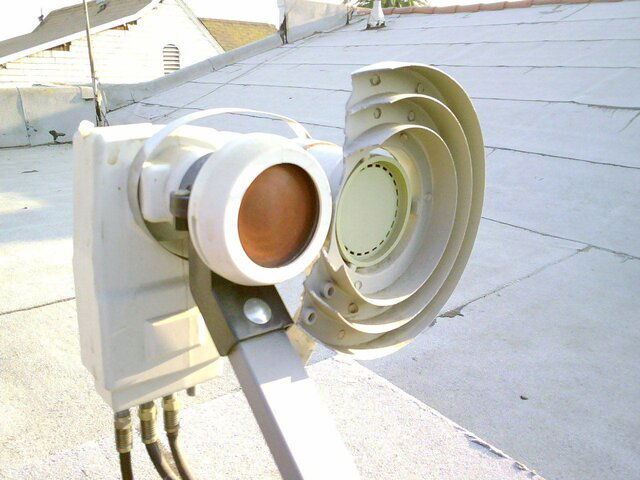Yes, well you did say you are getting pretty good Ku on that dish
The first picture shows a lnbf with a conical scalar ring for an offset dish. By using the Ku with a flat scalar ring for a PF you should pick up a point or two.
It looks like you should be using a six degree offset for you dish motor to move to the Ku lnbf. Are you doing that?
it's not a conical scalar ring, it's just a bracket to hold it, like this one:

and yep I have moved the dish but still get no signal when both lnbs are on
John - I initially wasn't paying attention, but your dish looks almost identical to one of mine, which I believe to be a 3.2m (10.5') Radyx. Do you have a depth measurement for it? My f/D calculates as 0.303, which is on the low side for a BUD. If your dish comes out the same, you will not have an easy time with Ku-band.
Pendra, I have no idea how to measure that
Is that so bad? With 1m offset dish one can catch just about everything NA wise in Ku-band at his location. Do I miss something in that comparison? Sounds strange JP, you're getting nothing at all.
when I use the bracket and the KU LNB only (as shown in the first pic) I do get almost every channel @ 83, 85, 93, 95, 97, 101, 105, 107, 113, 117 and 127.
I did blind scan the remaining satellites but got nothing and it makes sense since according to the lyngsat beam maps, Central Mexico is not covered at all by 87, 89, 91, 99, 103, so in short, that offset ku lnb in the first pic is working reasonably well, just not when I tried to put it next to the chaparral feedhorn.
it may match a 1m offset dish if the BUD was precisely aimed. from a real world tester, aiming ku on a BUD just doesnt seem worth the effort. it is so sensitive that a breathe seems to drop signal significantly. id deifnately opt for a 1m offset unless its absolutely necessary to use a BUD for ku. it is fun to tinker tho. haha.
crackt out,.
since my 10 footer is motorized and able to move from 137 to 83, it does make sense to wanna have both ku and c band on the same dish















